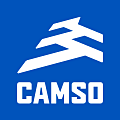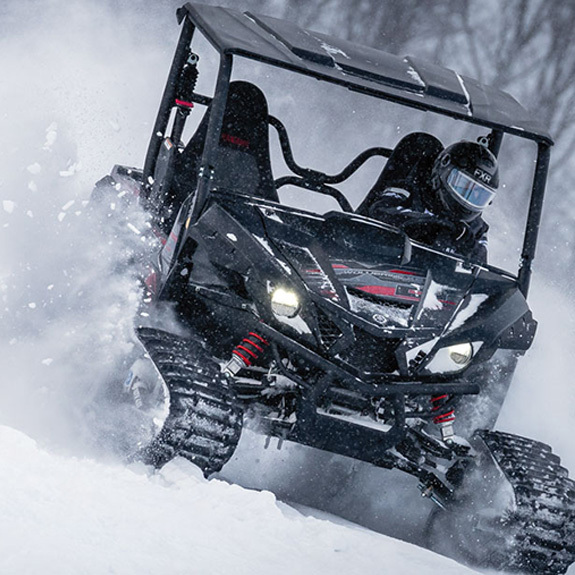Leading trends observed in the Material Handling industry
*This article is based on the former version of "Leading trends observed in the Material Handling industry". The text was updated in June 2025.
The forklift industry has existed for over a century. From basic, single-purpose machines, they have evolved into sophisticated systems used across an expanding range of industrial sectors and applications.
Expectations include handling heavier loads, moving them faster, and lifting them to greater heights. Forklifts are increasingly managed as part of industrial and commercial fleet operations rather than mere tools of the trade. As new technologies emerge, tire requirements evolve.
Current industry trends converge around four major axes that profoundly shape expectations for tire and mobility solutions.
Sustainable development and responsible handling
Environmental concerns are becoming central to corporate strategies. The handling industry is moving towards solutions that reduce carbon footprint, optimize resource consumption, and minimize waste. This shift is accompanied by a constant quest for energy efficiency and more environmentally friendly materials.
Long-Life tires: optimizing equipment lifespan
Extending equipment lifespan is both an economic and environmental challenge. Fleet managers seek sustainable solutions that reduce replacement frequency while maintaining high performance. This approach aims to optimize total cost of ownership (TCO) rather than just acquisition costs.
Digitization and predictive maintenance
The integration of digital technologies is revolutionizing fleet management. From predictive maintenance to route optimization and real-time performance monitoring, digitalization enables a proactive approach based on data analysis. This transformation facilitates decision-making and enhances operational efficiency. To learn more about fleet management and analysis, consult our experts.
Automation of handling processes
The increasing automation of handling processes is changing technical requirements. Autonomous and semi-autonomous vehicles require tires capable of meeting the precision and repeatability demands of automated systems. This evolution is accompanied by increased standardization of equipment and interfaces.
Tires: 5 key trends
Intensive use conditions, corrosive environments, and continuous productivity requirements demand solutions tailored to the unique challenges of handling operations. Furthermore, port sectors present specific requirements that amplify general handling trends.
Energy efficiency: reducing forklift energy consumption
What is energy efficiency in handling?
Energy efficiency involves optimizing the energy consumption of handling equipment to reduce operational costs and environmental impact. This approach aims to maximize performance while minimizing energy consumption, particularly crucial in port environments where equipment operates continuously.
Industrial context
The sector is witnessing increasing demand for electric forklifts driven by environmental concerns and operating savings. Ideally, a forklift battery lasts about 8 hours. It is essential to avoid interruptions due to battery discharge during a full work shift.
Several factors contribute to reducing costs associated with energy savings. However, it is important to note that the tires used impact all aspects of forklift operation, particularly when optimizing battery life.
Example
Solideal RES 660 "Xtreme Series" and Solideal PON 775 tires are examples of products designed to maximize forklift efficiency.
Durable tires: longevity and performance
Durability in tire strategies
Durability in the handling sector involves developing long-life tires that withstand intensive constraints while maintaining performance over an extended period. This approach aims to reduce replacement frequency, resource consumption, and maintenance costs.
Industrial context
Fleet managers have maintenance budgets, a significant portion of which is allocated to tires. The issue is not that tires themselves are particularly expensive, but they represent the primary wear part of such machines overall.
As they are the main wear parts, these companies need additional information and objective data to determine the true cost of tires for their forklifts.
Digital transformation of fleet management
Digitalization in the handling industry
Digitalization involves integrating digital technologies to optimize handling equipment management, monitoring, and maintenance. This transformation enables a proactive approach based on real-time data collection and analysis, facilitating decision-making and performance optimization.
Industrial context
The industry is gradually adopting IoT (Internet of Things) and artificial intelligence solutions to monitor tire conditions, predict maintenance needs, and optimize fleet rotations. This evolution meets the growing need for traceability, operational productivity, and cost optimization in a sector where equipment availability is critical.
Tire manufacturers have long offered tire ranges with varying performance levels and expected lifespans. Now, digital tools allow precise selection of the optimal tire for each specific application.
Camso innovation
The Usage Intensity Calculator perfectly illustrates this digital trend. This digital tool helps fleet managers choose the most suitable tire for their specific application and use.
Fleet electrification: new tire challenges
The rise of electric forklifts
Vehicle electrification in handling involves replacing traditional combustion engines with battery-powered electric systems. This evolution aims to reduce CO2 emissions and long-term energy costs.
Industrial context
This trend is changing tire requirements, particularly in terms of rolling resistance and thermal management. Tires must actively contribute to optimizing battery life. Electric vehicles generate instant torque different from combustion engines, altering tire stress factors. Additionally, battery weight influences tire design to maintain load performance.
The industry's demand for high-capacity, compact design forklifts is particularly pronounced. OEMs are constantly seeking to increase productivity with smaller platforms without increasing tire size.
This transition naturally shifts energy towards tires with smaller contact surfaces and volumes. Resistance to resulting heat accumulation forms the basis of Solideal tire development, designed to meet modern electric forklift fleet demands.
Personalized services and technical support
Beyond the product: a comprehensive service approach
Service in the handling sector encompasses all support, advisory, and technical support services that optimize tire use throughout their lifecycle. This approach aims to demonstrate true ownership costs rather than just acquisition costs, offering customized solutions tailored to each operational environment.
Industrial context
The industry is moving towards a partnership logic where tire suppliers become true mobility advisors. This transformation addresses the growing need for technical expertise and performance optimization in increasingly complex and demanding environments.
We strive to offer the lowest possible operating cost solution by providing not only high-performance products but also personalized support for each application. Our goal is to listen to your needs.
Differentiated approach
Our strategy is to offer the optimal solution for each specific use, whether maximizing lifespan or optimizing performance.
Solideal On-Site Service perfectly illustrates this personalized approach. Regardless of the type of forklift tire you use, Solideal On-Site Service ensures smooth operations wherever you are. With our extensive network of dedicated technicians and specialized equipment, our service is value-driven. Together with our numerous global partners, we offer tailor-made services to meet your fleet maintenance requirements, ensuring safe operations and maximum uptime.
Sector-Wide challenges
Operator safety and comfort
Beyond the undeniable aspects related to safe tire design, the industry increasingly faces elements that affect driver safety and health, such as vibrations and noise produced by tires.
Since forklifts lack suspension, there is minimal isolation between the driver and such vibrations. Therefore, tread design is crucial in minimizing these effects while meeting intensity, lifespan, and energy efficiency requirements.
Non-Marking tires: cleanliness and versatility
The demand for non-marking tire solutions is mainly seen in North America and Europe for applications where cleanliness is crucial. With improved floor conditions and facilities, companies no longer want to see tire marks or black rubber dust on handled goods.
Non-marking tires are gaining popularity among rental fleet owners unsure of where their forklifts will be used from month to month. By equipping their fleet with non-marking tires, they can maximize its potential regardless of the application. Solideal’s non-marking tire options deliver the same performance as their black counterparts while offering all the benefits of non-marking technology.
Partner in industrial tire innovation
As new technologies develop, tire needs continue to evolve. The latest industry trends, field tests, and daily customer feedback indicate that demands on wheels and tires will continue to grow.
Whether bringing to market tire solutions designed for maximum lifespan for your application or launching digital tools to facilitate optimal tire selection, we ensure to offer the solution that meets your needs and those of your machines.
Through our products, digital tools, and personalized support via our service offering, we continue to innovate daily to remain your preferred partner for mobility challenges in logistics, industrial, and port handling industries.



























